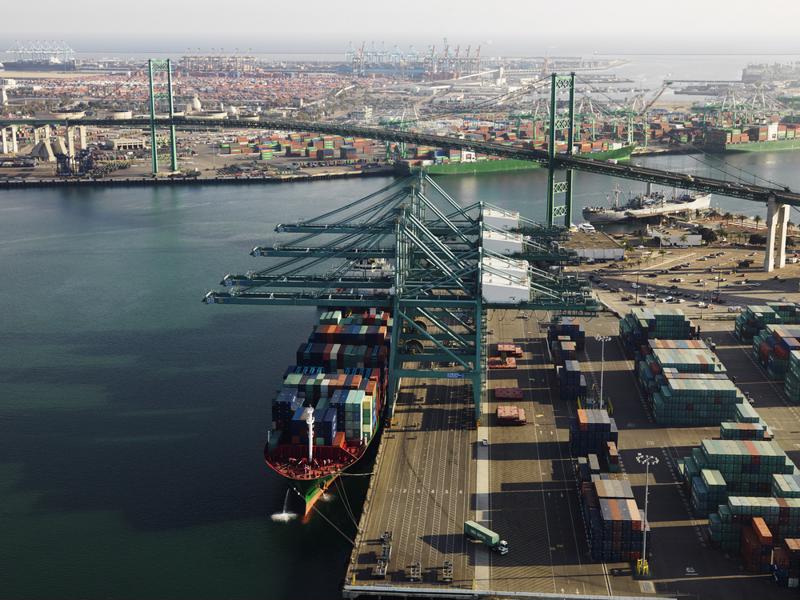One of the biggest challenges for a company can be the growth it experiences, especially if it is substantial growth in a short period of time. In many cases, companies do not have a well-established plan of attack for how to control and manage the growth. When developing a business growth plan, it is imperative to evaluate the company’s team, consider historical company data when assessing the current trends, and think ahead and strategize accordingly.
When significant company growth is on the horizon, a major starting place for evaluating the company’s capacity to take on the growth comes from the current resources. Evaluating the total number of employees throughout the company, as well as employees dedicated to the departments that are directly linked to the growth, which generally leans on the operations team. Ensuring that the team is comprised of enough resources is crucial, however it is a necessity to have an established training program in place. Employees can be capable of performing any task given to them, provided they have received foundational training as well as periodic development to enhance skills and evolve alongside the business. Although having enough resources, and consistently training and developing their skills is important, it is also a good idea to do the same with the company’s supply base. Many companies implement systems, whether it be an ERP system or another system, with their strategic suppliers. Companies can benefit from hosting periodic training sessions with their suppliers to ensure quality and compliance standards are being met during the growth period. Adjusting the company’s resources and size of the supply base will assist in monitoring costs and hands on deck when needed the most, and enforcing training sessions will only strengthen the company and its supply chain.
While evaluating the current team and supply base bandwidth, a step that can be performed concurrently involves reviewing historical company data to determine trends in the overall business growth. Any company can review historic data from last year, last month or even last week, however depending on the industry, the company may have certain variables to pay special attention to over others. For example, a company that sells winter sports gear will have a seasonal spike in demand, so they will want to compare their sales from the current fall or winter months to that of the prior year to have comparable figures. From there, the company can see how they are beginning to trend in comparison to the previous year, which will allow them to have better visibility and anticipation into their forecasting and demand planning for the remainder of the period.
To factor in the company’s growth, identify what percentage increase or decrease the company sees based off of the period being compared to the current state, which will provide more visibility into how business is currently trending. This then gives the company a more solid foundation to anticipate sales for that period of time. Reviewing historical company data is crucial in projecting sales at any given time, not just for periods of significant growth. However, it is still a necessary step to take to allow the company to stay ahead of the spikes and remain proactive in their planning and sourcing processes. With basing forecasts off of historical data, companies are able to give suppliers additional insight and more accurate forecast levels, ensuring business maintains consistency, especially during an increase in demand.
Though there are many ways in which a company can control and manage increases in business, it is important to make sure that the company not only has enough employees to handle the additional business, but that they are trained and their skills are consistently developing to strengthen the business overall. Additionally, looking back at historical data and sales figures can benefit the company’s anticipated business levels and identify trends. With improved visibility into the company’s trends, it will be easier to communicate increases or fluctuations in demand to suppliers, which will allow all sides involved to be proactive, rather than reactive. These two factors are relatively simple to keep in mind and assess, however they play a large role in controlling a growing business. If either or both of these factors are overlooked, it may cause tension within the business.
When significant company growth is on the horizon, a major starting place for evaluating the company’s capacity to take on the growth comes from the current resources. Evaluating the total number of employees throughout the company, as well as employees dedicated to the departments that are directly linked to the growth, which generally leans on the operations team. Ensuring that the team is comprised of enough resources is crucial, however it is a necessity to have an established training program in place. Employees can be capable of performing any task given to them, provided they have received foundational training as well as periodic development to enhance skills and evolve alongside the business. Although having enough resources, and consistently training and developing their skills is important, it is also a good idea to do the same with the company’s supply base. Many companies implement systems, whether it be an ERP system or another system, with their strategic suppliers. Companies can benefit from hosting periodic training sessions with their suppliers to ensure quality and compliance standards are being met during the growth period. Adjusting the company’s resources and size of the supply base will assist in monitoring costs and hands on deck when needed the most, and enforcing training sessions will only strengthen the company and its supply chain.
While evaluating the current team and supply base bandwidth, a step that can be performed concurrently involves reviewing historical company data to determine trends in the overall business growth. Any company can review historic data from last year, last month or even last week, however depending on the industry, the company may have certain variables to pay special attention to over others. For example, a company that sells winter sports gear will have a seasonal spike in demand, so they will want to compare their sales from the current fall or winter months to that of the prior year to have comparable figures. From there, the company can see how they are beginning to trend in comparison to the previous year, which will allow them to have better visibility and anticipation into their forecasting and demand planning for the remainder of the period.
To factor in the company’s growth, identify what percentage increase or decrease the company sees based off of the period being compared to the current state, which will provide more visibility into how business is currently trending. This then gives the company a more solid foundation to anticipate sales for that period of time. Reviewing historical company data is crucial in projecting sales at any given time, not just for periods of significant growth. However, it is still a necessary step to take to allow the company to stay ahead of the spikes and remain proactive in their planning and sourcing processes. With basing forecasts off of historical data, companies are able to give suppliers additional insight and more accurate forecast levels, ensuring business maintains consistency, especially during an increase in demand.
Though there are many ways in which a company can control and manage increases in business, it is important to make sure that the company not only has enough employees to handle the additional business, but that they are trained and their skills are consistently developing to strengthen the business overall. Additionally, looking back at historical data and sales figures can benefit the company’s anticipated business levels and identify trends. With improved visibility into the company’s trends, it will be easier to communicate increases or fluctuations in demand to suppliers, which will allow all sides involved to be proactive, rather than reactive. These two factors are relatively simple to keep in mind and assess, however they play a large role in controlling a growing business. If either or both of these factors are overlooked, it may cause tension within the business.




































